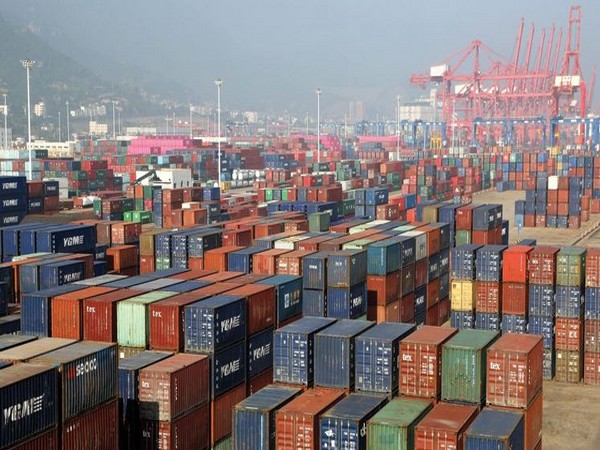India Faces Steep 25% US Tariff Hit: Exports Set to Plummet
Indian exports to the US are forecast to decline sharply by 30% due to a 25% reciprocal tariff imposed by the US. Key sectors including textiles and jewellery risk significant impact, creating an advantage for regional competitors. GTRI recommends a comprehensive five-point action plan to mitigate adverse effects.

- Country:
- India
Indian exports to the United States are poised to drop by nearly 30%, from USD 86.5 billion in 2024-25 to about USD 60.6 billion in 2025-26, as a result of new 25% reciprocal tariffs, as per the Global Trade Research Initiative (GTRI). The GTRI report highlights that labor-intensive sectors—such as garments, textiles, shrimp, jewelry, and engineering goods—are among those expected to suffer the most.
The tariffs place India at a distinct disadvantage compared to regional competitors like Vietnam, Bangladesh, and Mexico, who encounter lower or no tariffs at all. To mitigate these adverse impacts and strengthen its trade approach, the GTRI proposes a targeted five-point action plan. This plan includes financial relief for micro, small and medium enterprises (MSMEs), enhancing real-time trade intelligence, optimizing use of free trade agreements (FTAs), reforming tourism, and streamlining the onboarding process for new exporters.
India is confronting a 25% country-specific tariff and an additional unspecified 'penalty' on its US exports, making it one of the most affected Asian exporters, second only to China, which faces a 30% tariff. Meanwhile, countries like Vietnam (20%), Bangladesh (18%), Indonesia, Malaysia, and the Philippines (19%), and Japan and South Korea (15%) enjoy lower tariffs. GTRI underscores this disparity, noting it puts Indian exports at a distinct disadvantage across most sectors, barring a few exceptions.
Pharmaceuticals, energy products, critical minerals, and semiconductors are exempt from the new tariffs. However, Indian goods beyond these categories are facing increasing pressure, according to the report. Knitted and woven garments are subject to steep US tariffs of 38.9% and 35.3%, rates significantly higher than those for Vietnam, Bangladesh, and Cambodia. Made-up textiles like towels and bedsheets, which generate USD 3 billion in exports (with about half heading to the US), now confront a 34% duty. This increase distinctly benefits competitors such as Pakistan and Vietnam, GTRI notes.
India's shrimp exports, valued at USD 2 billion and accounting for 32% of the global supply, will now encounter a 25% US tariff, eroding their price advantage over rivals like Canada and Chile. Mechanical gold jewelry exports could face the harshest impact, and India's USD 4.7 billion exports of metals—predominantly steel, aluminum, and copper—will also suffer. GTRI suggests that these higher costs are anticipated to dampen demand from US infrastructure and energy buyers.
Trump's 27.1% tariff on India's USD 10 billion diamond and jewelry exports severely impacts the sector, given that 40% of its trade is global. With value addition hovering at just 3-4%, the slim profit margins make such duties particularly prohibitive. Mechanical gold jewelry, worth USD 3.6 billion, is projected to be hit hardest.
In terms of diamonds, the repercussions are even more intricate. India exports USD 4.9 billion in cut and polished diamonds to the US, however, US import figures show only USD 2.5 billion. Buyers often select and return stock, a process disrupted by high upfront tariffs, thereby escalating costs and potentially stifling demand, GTRI explained. Although petroleum exports remain tariff-free, there's a concern that India's sourcing of Russian crude could lead to penalties, citing President Trump's discontent with the influx of Russian oil.
Confronted with these challenges, can India pivot its trade focus to other markets? GTRI posits that compensating for US market losses by expanding elsewhere is challenging. Global trade dynamics are shifting towards protectionism, driven by political, security, and environmental considerations. For instance, the European Union, which imported USD 75.7 billion worth of Indian goods, will soon apply a carbon tax, diminishing the competitiveness of Indian steel and aluminum, GTRI adds.
Last Wednesday, President Donald Trump announced a 25% tariff imposition on Indian goods, alongside an unspecified penalty, despite anticipations of an interim trade agreement between the two nations that could have averted such tariffs. The US and India embarked on dialogues for a fair and balanced Bilateral Trade Agreement in March, aiming to conclude the first phase by October-November 2025.
On April 2, 2025, President Trump signed an executive order initiating reciprocal tariffs on several trade partners, with tariffs ranging from 10-50%. A 10% baseline tariff was applied, with a provisional deadline extended from July 9 to August 1 by the US administration.
President Trump has enforced reciprocal tariffs on multiple countries where there is a significant US trade deficit. Since starting his second term, he has consistently advocated for tariff equality, emphasizing that the United States will mirror tariffs imposed by other countries, including India, to uphold 'fair trade.' On Thursday evening, Commerce and Industry Minister Piyush Goyal addressed both parliamentary houses to state that the government is reviewing these tariffs' ramifications and will take the necessary measures to protect national interests. (ANI)
(With inputs from agencies.)
ALSO READ
Indian Exporters Reel Under Trump Tariffs: Urgent Call for Government Support
India Seeks Relief from Trump Tariffs to Boost Export Sectors
India Seeks Remedies Against Trump Tariffs Amid Trade Talks
Trade Tensions Loom: Trump Tariffs Target India’s Russian Oil Imports
Indian Market Slumps as Uncertainty Looms Over Trump Tariffs










